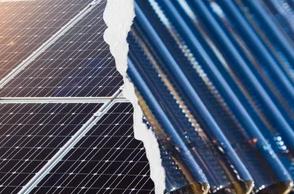Solar Power: The Cheapest Form of Energy?
The dawn of renewable energy has sparked a global debate: has solar power finally become the most affordable energy source? This question isn't just academic; it's central to our global shift towards sustainable energy solutions. Let’s dissect the current financial landscape of solar power, armed with facts, figures, and a clear-eyed view of the future.

The Dramatic Decline in Solar Costs
In the last decade, the cost of generating solar power has nosedived, marking a seismic shift in its economic viability. Between 2010 and 2020, the average cost of solar photovoltaic (PV) panels plummeted by approximately 80%, making solar installations not just affordable but highly attractive for both individuals and industries. This cost reduction has positioned solar power as a leading contender in the energy sector, with prices per kilowatt-hour (kWh) in some areas dropping below the $0.03 mark. This undercuts the cost of traditional fossil fuels significantly, heralding solar power as a potentially cheaper alternative.
Comparative Costs: Solar vs. Conventional Energy
When weighing solar energy against traditional energy sources, the discussion extends beyond mere installation expenses to encompass long-term operational costs. Solar power systems boast minimal maintenance costs and an operational lifespan of up to 30 years, promising substantial long-term savings. Moreover, the fluctuating prices of oil and gas add a layer of unpredictability to fossil fuels that solar power sidesteps with its price stability.
The Role of Incentives and Technological Innovation
The ascent of solar power to cost-competitiveness has been propelled by governmental incentives and breakthroughs in technology. Tax incentives, rebates, and supportive policies have made solar projects more financially appealing. Concurrently, advancements in panel efficiency and battery storage technologies have maximized the utility and reduced the cost of solar installations, further enhancing their economic appeal.
Solar Power on the Global Stage
Globally, the adoption of solar power is accelerating, driven by its increasingly competitive pricing. Nations like China and India, alongside regions such as the European Union, are investing heavily in solar infrastructure, recognizing its potential as a low-cost energy solution. The International Renewable Energy Agency (IRENA) underscores this trend, identifying solar power as one of the most economical sources for new electricity generation on a global scale.
So, Is Solar the Cheapest Form of Energy?
Given the steep decline in solar power costs and the broader economic and environmental context, it's compelling to argue that solar power is now the cheapest form of energy available. The combination of low operational costs, price stability, and technological advancements positions solar energy as a financially savvy choice for the present and future.
Embracing a Solar-Powered Future
The journey of solar power from a high-cost alternative to a leading low-cost energy source is a testament to human ingenuity and our commitment to sustainable development. As the costs continue to decrease and the technology advances, solar power is set to play a pivotal role in our energy mix. This shift is not merely about economics; it's about choosing a cleaner, greener path forward for our planet, ensuring a sustainable energy landscape for generations to come.